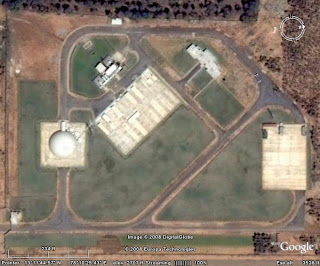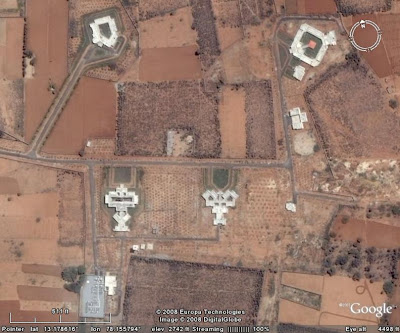The case to support the indigenous LCA programme
Ashok Parthasarathi and Raman Puri
| The facts with regard to perceived cost and time overruns and performance shortfalls in perspective |
There have been several articles in the press critical of projects of the Defence Research and Development Organisation (DRDO) in general, and specifically the programme relating to the Light Combat Aircraft (LCA), now named Tejas, and the Integrated Guided Missile Development Programme. Indeed, whenever a significant event that involves indigenous R&D, particularly defence-related, occurs, or a crucial decision is set to be taken, articles originating from within the defence “system,” or from vendors who see their business prospects threatened, appear. The real facts relating to the programme need to be put in context.
Performance shortfalls The two issues on which the LCA project is criticised are cost and time overruns, and performance shortfalls. As regards the so-called time overruns, when the zero/go date for the project is taken as 1983, the critics fail to mention that what was sanctioned in 1983 was an ad hoc Rs.560 crore, pending full preparation of the Project Definition Document (PDD) — which is a fundamental step even to start the design and development process. The costs were to be finalised based on the PDD. This required the setting up of infrastructure in a hundred academic institutions and R&D laboratories and building up expertise to undertake the fundamental and application-oriented R&D required, and harnessing the design and engineering effort available largely in the public sector units for such a complex, state-of-the-art aircraft. The Aeronautical Development Agency (ADA) discussed with Air Headquarters the Air Staff Requirement (ASR). Air Headquarters had requirements added to what was originally to be a replacement for the MiG-21. As a result, the ASR that was finalised was practically that for a Mirage 2000. But in the public perception the LCA remained as a replacement for MiG 21.
It look seven years, till 1990, to formulate the PDD. Based on this the ADA, in a report to the Ministry of Defence in 1990, gave a time-frame of seven years to develop the LCA and projected a financial requirement of Rs.4,000 crore. This included the building of four prototypes also. There had been a 25-year gap since the only fighter aircraft ever indigenously designed, developed and manufactured, namely the HF-24 Marut, had entered squadron service. So the period of seven years to set up a more advanced R&D infrastructure and build up even the core personnel needed to develop the technologies that the LCA’s ASR and PDD called for, was modest.
“Go-ahead” After consideration, including by special committees, the Indian Air Force and the government gave the real operational go-ahead only in late-1993. Even that “go-ahead” covered the development of only two Technology Demonstrator Aircraft (TDA) without weaponisation. The funding approved was only of Rs.2,000 crore — half the amount requested for full-scale development. The first TDA flew in 2001, eight years from the real operational ‘go’ date, despite much additional R&D work that had to be undertaken due to the U.S. sanctions imposed in 1998.
Comments appeared in the media in 2001 quoting IAF sources to the effect that what the ADA had achieved was just a flying machine that was yet to be weaponised. Considering the nature and scope of the approval accorded in 1993, what else was to be expected? Using the money sanctioned for two TDAs, the ADA built four. Full-scale development, for which another Rs.2,000-plus crore was finally sanctioned, thus started only in late-2001. Some 1,200 hours of flight testing was to be undertaken to secure Initial Operational Clearance (IOC) from the IAF.
At that point, apart from the weaponisation requirements the project had to undergo extensive redesign to accommodate an air-to-air missile chosen by the IAF, which was considerably heavier and longer than what had been specified till 2000. The IAF had again changed its mind. This necessitated the complete redesign of the wing structure, using only composite materials in order to keep the weight within limits. The period of this redesign was also utilised to upgrade the avionics, to a completely open architecture.
Consequently, in “generational terms” the LCA is a fourth generation-plus aircraft with full networking capabilities. This made it more than comparable to anything the IAF had, and possibly would have, even after it acquires the 126 Multi-Role Combat Aircraft (MRCA) now on tender, with first deliveries due eight years hence.
On the engine It is true that the Kaveri engine for the LCA that the Gas Turbine Research Establishment (GTRE) of the DRDO has been developing for 12 years has not yet met its technical performance targets and requires redevelopment. So far the GE 404 engine from the U.S., which powers the F-16 fighter-bomber, has been used to power the LCA. The problems the GTRE has with the Kaveri are not unusual in a complex fighter aircraft engine project being undertaken for the first time. Moreover, the financial sanction of about Rs.320 crore given for engine development was possibly only to cover the Project Definition Phase and some high-risk technology development effort. We do not know of a first-of-type high-technology fighter aircraft engine being developed anywhere in less than a multi-billion dollar programme and a 20-year-plus development cycle. Even Snecma, the sole fighter aircraft engine manufacturer in France, despite decades of experience in developing and manufacturing engines for Mirage III, V and F-1, took about a decade and $2.2 billion to develop the M-88 engine for the Mirage 2000. The development of the Kaveri is unlikely to cross $1 billion.
The LCA with a GE 404 engine has done 800-plus hours of flight-testing. Even with that engine the performance has been not only vastly superior to that of even the recently upgraded MiG 21 BIS (the IAF is operating almost 400 of the series), but it has shown itself to be comparable in many critical parameters to the Mirage 2000. Modifications to the aircraft structure are under way to reduce weight and improve engine performance. When the GTRE’s joint venture with a leading foreign engine manufacturer for further development is completed in the next four years, the Kaveri will be brought up to a performance level, superior to the GE 404. Fitted with it, the LCA will be truly comparable to the Mirage 2000 and in many respects even superior. And all this in an aircraft much lighter than the Mirage 2000.
Superior As for network-centric capability, which intrinsically needs indigenous systems for secrecy, security and inter-operability, it is superior in the LCA compared to any aircraft in the IAF’s inventory.
So it is a fallacy to think that we can continue the importing spree and still have such network-centric capability.
As recently as in 2005, the IAF’s requirement for 126 new aircraft was only for an upgraded Mirage 2000. At Rs.120 crore to Rs.140 crore a plane, compared to at least double that amount for any of the aircraft types now bidding for the 126 MRCA, is not the LCA a highly cost-effective fighter for volume induction into the IAF?
As for development costs, the LCA has remained well within the sanctioned $1.2 billion — which is about the lowest anywhere. Time overrun in the strict sense is only by a year or two, despite the sanctions. A first-of-type aircraft of this degree of complexity has not been developed anywhere in the West or in Russia in less than two to three decades.
The F16 series that was inducted into the U.S. Air Force in 1975 is today at Mark 60. That is how aircraft of this level of complexity are improved after induction. That this imperative applies even more to the LCA has to be recognised.
It is for the Prime Minister and the Defence Minister to ensure that this effort is not belittled or scuttled, and that the LCA programme is given all-out support — as successive Prime Ministers have ensured for our atomic energy and space programmes.
(Ashok Parthasarathi was Science Adviser to Prime Minister Indira Gandhi. Vice- Admiral (retired) Raman Puri was Chief of Integrated Defence Staff to the Chairman, Committee of Service Chiefs, remaining closely involved with the inter-service weapons acquisition process from October 2003 to February 2006).
This sums up what all the detractors of the 'DDM' have been saying for the past decade or more, and far more eloquently than I could have ever hoped. (for the uninitiated, DDM -
The LCA compares extremely well with similar programs when you look at the challenges that had to be overcome. Even with regards to time, it is as good as the other 4.5 gen combat aircraft. The article makes that extremely clear.
Even with regards to the time, it blows to smithereens the myth that LCA has overrun its cost of 560 crores (which was only the initial allocated sum, and not the total project cost).
has written an even more brutal repartee to the Media lies, and mauls apart all that the English language press uses to cover their fabrications, without even leaving them a fig leaf of credibility or truth to cover their shame with. This five page bloodbath at






